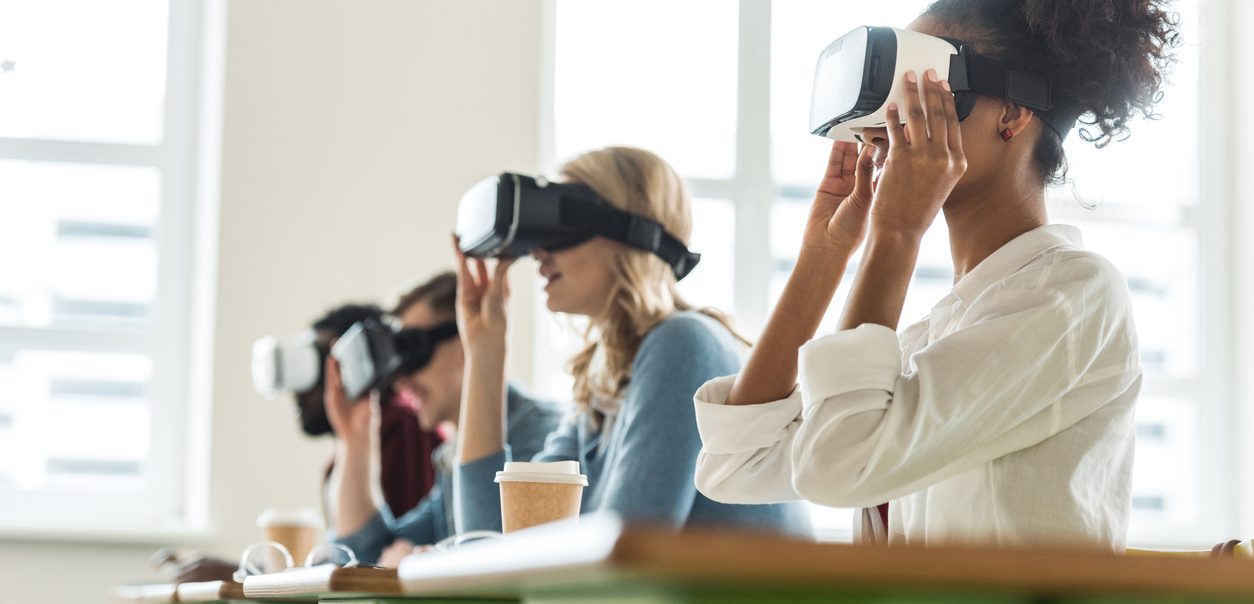
Articles
Higher Education
Do Men and Gamers Benefit More from VR Instruction?
By Henry Kronk
January 25, 2020
Instruction using VR has been gaining steam in undergraduate education. Especially in subjects in which learners need to understand and study 3D objects—medicine, engineering, math, and other STEM fields—many educators believe the technology has huge potential. But it’s also highly untested, and no one fully understands how it differs in an educational context from other media. Previously published studies have indicated that some students benefit more from it than others. Specifically, experience playing video games and even gender might have an effect on how one learns with VR. In research out this month, investigators from Ohio State University look into the matter further.
In 2017, a team led by Ohio State physics PhD candidate Joseph Smith uncovered an interesting phenomenon. They were looking into how VR environments could be used to teach a unit in electrostatics in an introductory physics course. While students tended to say that they enjoyed the VR, male students and those who reported playing video games regularly recorded larger gains than women and and non-gamers. What’s more, among non-gamers, people in the VR test group had lower gains than the control group (who weren’t using VR). (This study did not account for non-binary learners.)
As Smith et al. wrote at the time, “These results support the hypothesis that successful use of VR is dependent on the student having some experience with video games.”
They continue, writing, “there does appear to be a slight gender bias against women for the effectiveness of VR treatments, and this could be due to the disparity between men’s and women’s self-reported experience with video games in our study.”
Evidence Indicated that Men and Gamers Benefited More from VR in Education than Women and Non-Gamers
These conclusions have strong implications for the future use of VR. If the technology primarily benefits one subset of a student body, educators would need to think twice before giving it to an entire class to use.
This month, Smith and many of the authors on the study described above published results from a follow up study that dug deeper into the issue. Again, they introduced a VR supplement to an electrostatics unit.
But this time, they wanted to see if they could train a treatment group of learners to use VR in advance and, as a result, improve their performance. This would hypothetically make up ground that non-gamers lose when using VR.
They also did away with a non-VR control group. For their control, they asked learners to go through the VR instruction without training. They also distinguished between 3D gamers and 2D gamers.
In all, 271 students participated in the study, 20% of whom identified as female. Here, gender identification was voluntary, and a small subset of the group identified as neither male nor female. However, it did not make up a large enough sample to be representative.
The Second Study
For the training test group, the researchers gave learners a simple five minute instructional how-to with the VR headset, asking them to explore a 3D house and plane and answer basic questions about both.
Based on the previous results, they hypothesized that, again, gamers would perform better on an activity post-test than non-gamers, and that learners who had been through the VR training would outperform those who had not.
These hypotheses, however, were not confirmed.
Gamer students in the control (non-VR training) group improved the least out of any. In fact, their post-instruction score was, on average, worse than the pre-test. Comparing the control and the treatment group, the average post-instruction scores were almost the same.
The authors write, “Although we find evidence that VR training is beneficial for students to learn from VR- based instruction, overall, we must conclude VR-based instruction has essentially a null effect on student understanding overall, especially if the final goal is for students to answer inherently 3D questions on 2D media like paper exams and computer screens.”
In other words, these results indicate that women and non-gamers can benefit, in some cases, more than men and gamers. But in terms of student outcomes, virtual reality doesn’t necessarily deliver better outcomes than traditional instruction, and outcomes can’t always be improved with a training intervention.
With that said, the authors conclude writing, “Finally, students do report more positive attitudes towards VR with most of them saying they find the VR visualizations to be ‘helpful’ or ‘extremely helpful.’ In another question they found the VR experience to be ‘enjoyable’ or ‘extremely enjoyable.’”
Considering these results and conclusions, VR in education merits further investigation.
Read the full study here.
Featured Image: LightFieldStudios, iStock.









No Comments